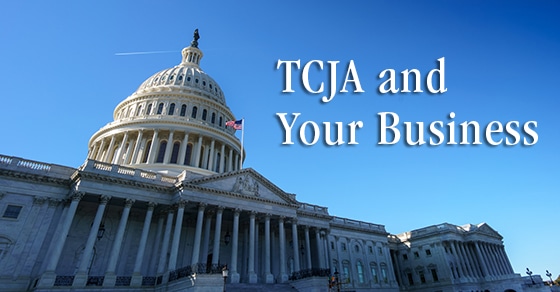Preserve wealth for yourself and your heirs using asset protection strategies

There are many techniques you can use to protect your assets, from giving them to loved ones to placing them in offshore trusts. It’s important to understand that asset protection isn’t about evading legitimate debts, hiding assets or defrauding creditors. Rather, it’s about preserving your hard-earned wealth in the face of unreasonable creditors’ claims, frivolous […]
Making the right choice about your office space

For many companies, there comes a time when owners must decide whether to renew a lease, move on to a different one or buy new (or pre-existing) space. In some cases, it’s a relatively easy decision. Maybe you’re happy where you are and feel like such a part of the local community that moving isn’t […]
Income statement items warrant your auditor’s attention

Today’s auditors spend significant time determining whether amounts claimed on the income statement capture the company’s financial performance during the reporting period. Here are some income statement categories that auditors focus on. Revenue Revenue recognition can be complex. Under current accounting rules, companies follow a patchwork of industry-specific guidance. So, companies in different industries may […]
Tax Cuts and Jobs Act: Key provisions affecting businesses

The recently passed tax reform bill, commonly referred to as the “Tax Cuts and Jobs Act” (TCJA), is the most expansive federal tax legislation since 1986. It includes a multitude of provisions that will have a major impact on businesses. Here’s a look at some of the most significant changes. They generally apply to tax […]
Tax Cuts and Jobs Act: Key provisions affecting individuals

On December 20, Congress completed passage of the largest federal tax reform law in more than 30 years. Commonly called the “Tax Cuts and Jobs Act” (TCJA), the new law means substantial changes for individual taxpayers. The following is a brief overview of some of the most significant provisions. Except where noted, these changes are […]
Got multiple locations? Expect auditors to keep a close eye on inventory

Do you remember the high-profile fraud that happened at drugstore chain Phar-Mor in the 1990s? Executives manipulated the company’s financial statements to hide approximately $500 million in losses. A key ploy that perpetrators used in the Phar-Mor case was to overstate inventory balances at individual stores. Management became adept at hiding the scam from their […]
Find time for strategic planning

As a business owner, you know that it’s easy to spend nearly every working hour on the multitude of day-to-day tasks and crises that never seem to end. It’s essential to your company’s survival, however, to find time for strategic planning. Lost in the weeds Business owners put off strategic planning for many reasons. New […]
7 steps to choosing a successor for your family business

There’s an old saying regarding family-owned businesses: “Shirtsleeves to shirtsleeves in three generations.” It means the first-generation owner started in shirtsleeves and built the company up from nothing but, by the third generation, the would-be owner is back in shirtsleeves with nothing because the business failed or was sold. Although you can’t guarantee your company […]
You may need to add RMDs to your year-end to-do list

As the end of the year approaches, most of us have a lot of things on our to-do lists, from gift shopping to donating to our favorite charities to making New Year’s Eve plans. For taxpayers “of a certain age” with a tax-advantaged retirement account, as well as younger taxpayers who’ve inherited such an account, […]
Make New Year’s resolutions to improve profitability

Many people scoff at New Year’s resolutions. It’s no mystery why — these self-directed promises to visit the gym regularly or read a book a month tend to quickly fade once the unavoidable busyness of life sets in. But, for business owners, the phrase “New Year’s resolutions” is just a different way of saying “strategic […]

